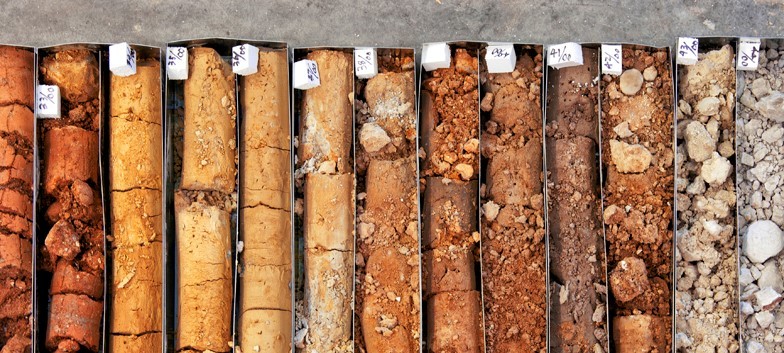Leading Consulting Civil Engineering Companies for Facilities Projects
Leading Consulting Civil Engineering Companies for Facilities Projects
Blog Article
How Consulting Engineers Enhance Geotechnical Design Projects: Insights Into Their Experience, Methodologies, and Collaborative Approaches
Consulting engineers are critical in improving geotechnical design tasks, applying their specialized expertise to browse the intricacies of subsurface problems. Their joint strategies foster communication among diverse project stakeholders, inevitably shaping the project's trajectory.
Duty of Consulting Engineers
The experience of consulting designers in geotechnical design is basic to the successful implementation of building tasks. These experts play an essential duty in analyzing soil and rock residential or commercial properties, which are crucial variables influencing layout and building choices. By carrying out detailed website investigations, consulting designers gather essential information that informs the design process, making sure tasks are improved secure and suitable ground.
Consulting engineers also supply invaluable understandings into danger administration (geotechnical geologist). They determine possible geotechnical risks, such as landslides, dirt liquefaction, and settlement problems, making it possible for stakeholders to apply reliable mitigation strategies. Their experience aids in enhancing foundation layouts, which can lead to considerable cost financial savings and enhanced safety and security
Moreover, getting in touch with designers serve as a vital link in between task owners, architects, and contractors. Their capability to convert intricate geotechnical information right into actionable suggestions cultivates collaboration and promotes educated decision-making throughout the job lifecycle. This multidisciplinary strategy not just enhances project effectiveness but additionally guarantees conformity with regulative criteria and ideal methods.
Trick Methodologies in Geotechnical Design

One main approach is site examination, which involves conducting area tests and lab evaluations to collect information on subsurface problems. Strategies such as Criterion Infiltration Testing (SPT) and Cone Infiltration Screening (CPT) are widely used to assess dirt stratigraphy and stamina. In addition, geophysical approaches, consisting of seismic and electrical resistivity studies, provide non-invasive means to assess subsurface characteristics.
An additional critical method is numerical modeling, which enables engineers to simulate numerous situations and anticipate just how soil-structure interactions will certainly act under different loading problems. Finite Aspect Analysis (FEA) is an usual strategy used in this context.
In addition, the design of foundations, preserving structures, and earthworks relies greatly on these techniques - geotechnical geologist. By incorporating sophisticated logical tools with area information, speaking with engineers can develop tailored options that resolve specific project challenges, ultimately adding to the security and safety of construction tasks
Significance of Dirt Analysis
Dirt analysis acts as a foundational element in geotechnical engineering, giving essential understandings into the physical and chemical residential properties of soil required for reliable construction planning. Comprehending soil qualities is vital for establishing its load-bearing capacity, water drainage behavior, and capacity for settlement or instability. Detailed soil investigations, including sampling and research laboratory testing, help recognize criteria such as dirt type, dampness web content, density, and shear stamina.
These analyses inform the selection of proper construction methods and materials, inevitably influencing task security and durability. As an example, cohesive soils might require different foundation layouts compared to granular soils, necessitating customized engineering remedies. Additionally, browse around these guys dirt analysis help in recognizing pollutants that can posture threats to human wellness or the atmosphere, permitting the advancement of reduction approaches.
Incorporating dirt evaluation right into the onset of project growth assists to lessen unanticipated difficulties, making certain that designers can prepare for and resolve possible problems before they rise. By developing a thorough understanding of the site problems, Read Full Report consulting designers can maximize style effectiveness and decrease expenses, therefore enhancing the general success of geotechnical engineering tasks.
Collaborative Strategies in Jobs
Effective geotechnical tasks usually pivot on joint approaches that combine varied expertise from various disciplines. Efficient collaboration amongst consulting designers, geologists, environmental scientists, and building and construction experts is critical for addressing complicated challenges and optimizing project end results. By leveraging the distinct skills and expertise of each team participant, projects can take advantage of an alternative understanding of the site problems, governing requirements, and engineering constraints.
Routine interaction and interdisciplinary conferences assist in the sharing of insights and promote a culture of team effort. These collective efforts make it possible for the recognition of possible dangers early in the task lifecycle, enabling timely mitigation methods. Including comments from stakeholders, including regional communities and governing companies, ensures that all perspectives are considered, enhancing job approval and conformity.
Furthermore, the combination of advanced innovations, such as Geographic Info Equipment (GIS) and Building Information Modeling (BIM), more improves cooperation. These tools allow for the real-time sharing of data and visualization of geotechnical problems, promoting notified decision-making. Ultimately, a collective strategy not just streamlines project implementation yet likewise lays the structure for innovative services to intricate geotechnical design difficulties.
Influence On Job Results

Consulting engineers utilize advanced approaches such as risk analysis and predictive modeling, which boost the accuracy of task projections. Their capability to incorporate ingenious modern technologies, like geotechnical instrumentation and data analytics, better refines the style and building processes. As a result, tasks experience enhanced efficiency, decreased expenses, and reduced delays.
Moreover, cultivating efficient communication and collaboration among team members improves problem-solving abilities. When obstacles develop, a joined front permits quick recognition of options, stopping possible setbacks. Inevitably, the joint efforts of consulting engineers add to better results, making sure that tasks satisfy both governing standards and client assumptions.
Final Thought

Report this page